I was cast as a Village Dancer in the first act, the Lead Spanish Princess in the third act that comes to the prince's party hoping to win his hand, and a Swan. These are three COMPLETELY different roles and each require a different air, different mannerisms, and a different style.
It's nerve-wracking enough to be dancing Swan Lake period. It's a timeless classic and has been performed by thousands for over a hundred years. Obviously, you want to do the ballet some justice. The amount of stamina the swan corps requires is truly remarkable. Beginning with that famous trailing line of white tutus that soute and emboite back and forth across the stage (if you've ever seen the American Ballet Theater's production of Swan Lake then you know exactly what I mean). I was the second swan to enter so within about a minute of our stage time my legs were burning.
Watch American Ballet Theater's performance of the entire ballet here: There's a certain respect that comes along with the role of a swan. It's your job to stand there like a figure in a painting and keep your head down in somber benevolence as you wait for the Swan Queen to finish her variation... Then you finally get to switch legs and stand some more. Your feet go numb, your calves tingle like a thousand needles pricking into your muscles. I can recall hearing the dancer standing next to me sniff during our first dress rehearsal at the auditorium, and the next opportunity I had to look up I caught a glimpse of a tear dripping down her nose. THAT is how badly it hurts. But somehow we keep going. Just honored to be onstage and have the opportunity to be a part of debatably the most famous ballet of all time. And let's not forget that soon after coming offstage I had to run back to my dressing room and put on the sultry, long, and heavy Spanish Princess dress and dance a three-and-a-half minute variation. Probably the longest I've done to date! Dancing wise, what are some physical differences between the three roles? A swan's movements are obviously going to be slower, longer, and more liquefied than what a normal ballet dancer in class would do. The arms lead with the elbows as they cascade up and down to create a rippling quality that is much smoother than say the sharp, precise, and feisty movements of a Spanish dancer.
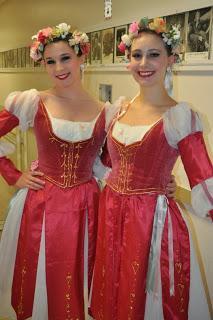 A Spanish dancer is stereotypically powerful and playful. I'm often type casted as this dancer and, in all honesty, it's usually what I prefer doing. The jumps are higher, the balances are hit harder, and the turns are faster. However, that doesn't make it more or less difficult than dancing slower and lyrically.
A Spanish dancer is stereotypically powerful and playful. I'm often type casted as this dancer and, in all honesty, it's usually what I prefer doing. The jumps are higher, the balances are hit harder, and the turns are faster. However, that doesn't make it more or less difficult than dancing slower and lyrically.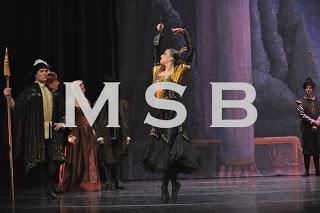 The village dancer of the first act is slightly more classical, but this makes the role difficult in its own right. The character isn't cut and dry. You have to be happy and cheerful, but while the main characters execute their pantomime, it's our job to react with vivid expressions to show the audience how they should be reacting. It's a role with slightly less pressure which makes it all the more fun.
What are some characteristic differences between the three roles? i.e. facial expressions, mannerisms, etc.
The village dancer of the first act is slightly more classical, but this makes the role difficult in its own right. The character isn't cut and dry. You have to be happy and cheerful, but while the main characters execute their pantomime, it's our job to react with vivid expressions to show the audience how they should be reacting. It's a role with slightly less pressure which makes it all the more fun.
What are some characteristic differences between the three roles? i.e. facial expressions, mannerisms, etc.
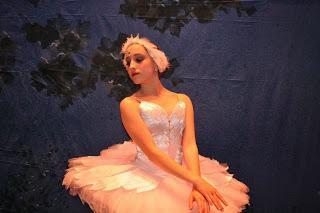 A swan is melancholy, almost mournful. There are different variations on the story but here the swans represent all of the other girls that Von Rothbart has transformed into the elegant birds. They have lost their former identities and are forever doomed to live their lives in this new form. To portray this kind of sadness, you leave your head tilted downwards, knit your eyebrows together, and, in a way, let the rest of your facial muscles go limp and wilt. This depicts a "downward" quality to your facial features and gives your body a gloomy nature.
A swan is melancholy, almost mournful. There are different variations on the story but here the swans represent all of the other girls that Von Rothbart has transformed into the elegant birds. They have lost their former identities and are forever doomed to live their lives in this new form. To portray this kind of sadness, you leave your head tilted downwards, knit your eyebrows together, and, in a way, let the rest of your facial muscles go limp and wilt. This depicts a "downward" quality to your facial features and gives your body a gloomy nature.
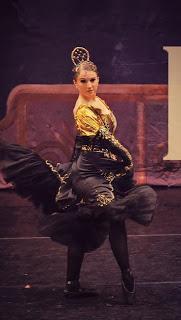 A Spanish dancer is essentially the polar opposite. You smirk, you raise your eyebrow(s) in flirtation, you flash a dazzling smile that proves your superiority. When you're not flying across the stage, sometimes there's almost a game between you and the audience. You stare them down and captivate them until you have to turn away. They challenge you with the inability to be thrilled and it's your job to take them over until you've done just that. It's very exciting.
A Spanish dancer is essentially the polar opposite. You smirk, you raise your eyebrow(s) in flirtation, you flash a dazzling smile that proves your superiority. When you're not flying across the stage, sometimes there's almost a game between you and the audience. You stare them down and captivate them until you have to turn away. They challenge you with the inability to be thrilled and it's your job to take them over until you've done just that. It's very exciting.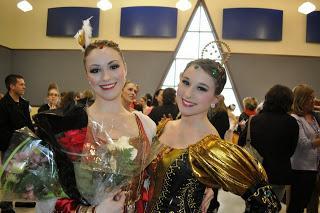
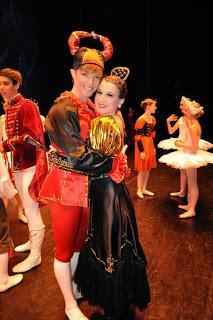 The village dancer requires the slightly more over-dramatic reactions. Most of you know, I'm sure, how difficult and awkward stage-conversation can be. It's suppose to look real. We have to make the audience believe that this is some European village from hundreds of years ago and your fellow dancers are your friends that you see in town every day. It's difficult and takes a plethora of practice before you can get comfortable. But once you and your friends can play off of each other and do a little acting and reacting, it's great fun.
The village dancer requires the slightly more over-dramatic reactions. Most of you know, I'm sure, how difficult and awkward stage-conversation can be. It's suppose to look real. We have to make the audience believe that this is some European village from hundreds of years ago and your fellow dancers are your friends that you see in town every day. It's difficult and takes a plethora of practice before you can get comfortable. But once you and your friends can play off of each other and do a little acting and reacting, it's great fun.Swan Lake is the mother of all ballets... The word difficult doesn't even do it a little bit of justice but despite of the dozens of blisters, leg cramps, and even tears, there were so many laughs, smiles, hugs, and even more tears when it was over. It brought the Maine State Ballet Company that much closer together and was an honor to be able to perform.
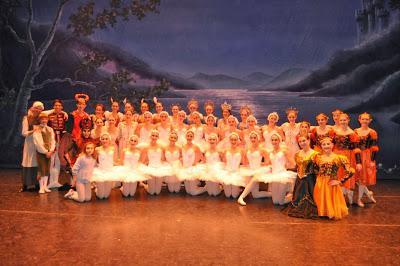 Keep a look out for the next post! It may or may not be a jump forward in time to talk about the most beloved holiday ballet of all time... ;) If you have any requests, comments, or questions feel free to leave a comment below or e-mail me at: [email protected].
Thanks lovelies!
Rhiannon -
Keep a look out for the next post! It may or may not be a jump forward in time to talk about the most beloved holiday ballet of all time... ;) If you have any requests, comments, or questions feel free to leave a comment below or e-mail me at: [email protected].
Thanks lovelies!
Rhiannon -
